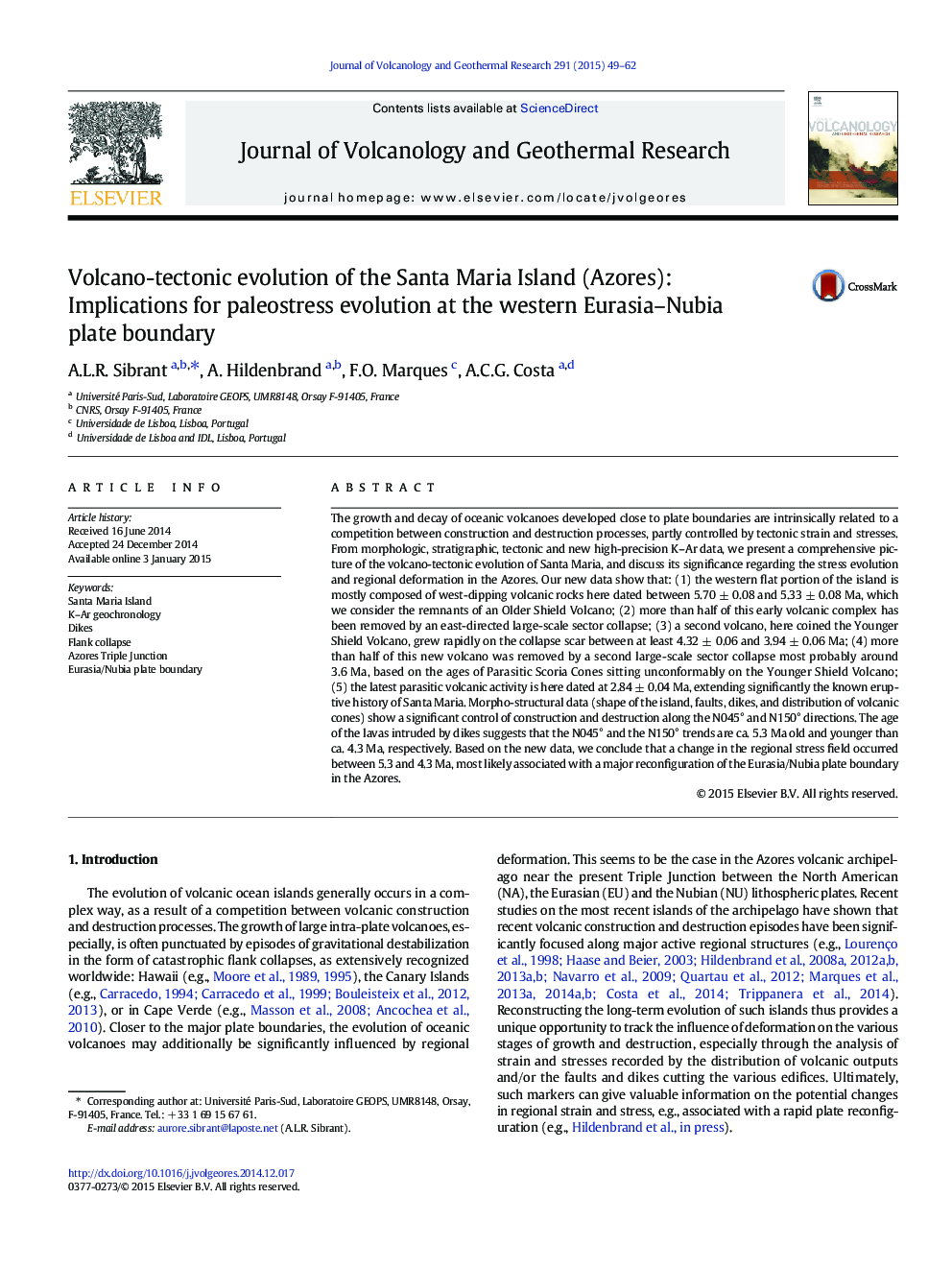| کد مقاله | کد نشریه | سال انتشار | مقاله انگلیسی | نسخه تمام متن |
|---|---|---|---|---|
| 4712932 | 1638331 | 2015 | 14 صفحه PDF | دانلود رایگان |

• S. Maria Island is located close to the unstable Eurasia–Nubia plate boundary.
• We investigate the meaning of S. Maria volcanism in this geodynamic setting.
• We propose a new stratigraphy and a new multi-stage evolution for S. Maria.
• We recognize 2 flank collapses likely related to the regional tectonics.
• From the major change in dike trend, the stress field changed ca. 5.3–4.3 Ma.
The growth and decay of oceanic volcanoes developed close to plate boundaries are intrinsically related to a competition between construction and destruction processes, partly controlled by tectonic strain and stresses. From morphologic, stratigraphic, tectonic and new high-precision K–Ar data, we present a comprehensive picture of the volcano-tectonic evolution of Santa Maria, and discuss its significance regarding the stress evolution and regional deformation in the Azores. Our new data show that: (1) the western flat portion of the island is mostly composed of west-dipping volcanic rocks here dated between 5.70 ± 0.08 and 5.33 ± 0.08 Ma, which we consider the remnants of an Older Shield Volcano; (2) more than half of this early volcanic complex has been removed by an east-directed large-scale sector collapse; (3) a second volcano, here coined the Younger Shield Volcano, grew rapidly on the collapse scar between at least 4.32 ± 0.06 and 3.94 ± 0.06 Ma; (4) more than half of this new volcano was removed by a second large-scale sector collapse most probably around 3.6 Ma, based on the ages of Parasitic Scoria Cones sitting unconformably on the Younger Shield Volcano; (5) the latest parasitic volcanic activity is here dated at 2.84 ± 0.04 Ma, extending significantly the known eruptive history of Santa Maria. Morpho-structural data (shape of the island, faults, dikes, and distribution of volcanic cones) show a significant control of construction and destruction along the N045° and N150° directions. The age of the lavas intruded by dikes suggests that the N045° and the N150° trends are ca. 5.3 Ma old and younger than ca. 4.3 Ma, respectively. Based on the new data, we conclude that a change in the regional stress field occurred between 5.3 and 4.3 Ma, most likely associated with a major reconfiguration of the Eurasia/Nubia plate boundary in the Azores.
Journal: Journal of Volcanology and Geothermal Research - Volume 291, 15 January 2015, Pages 49–62